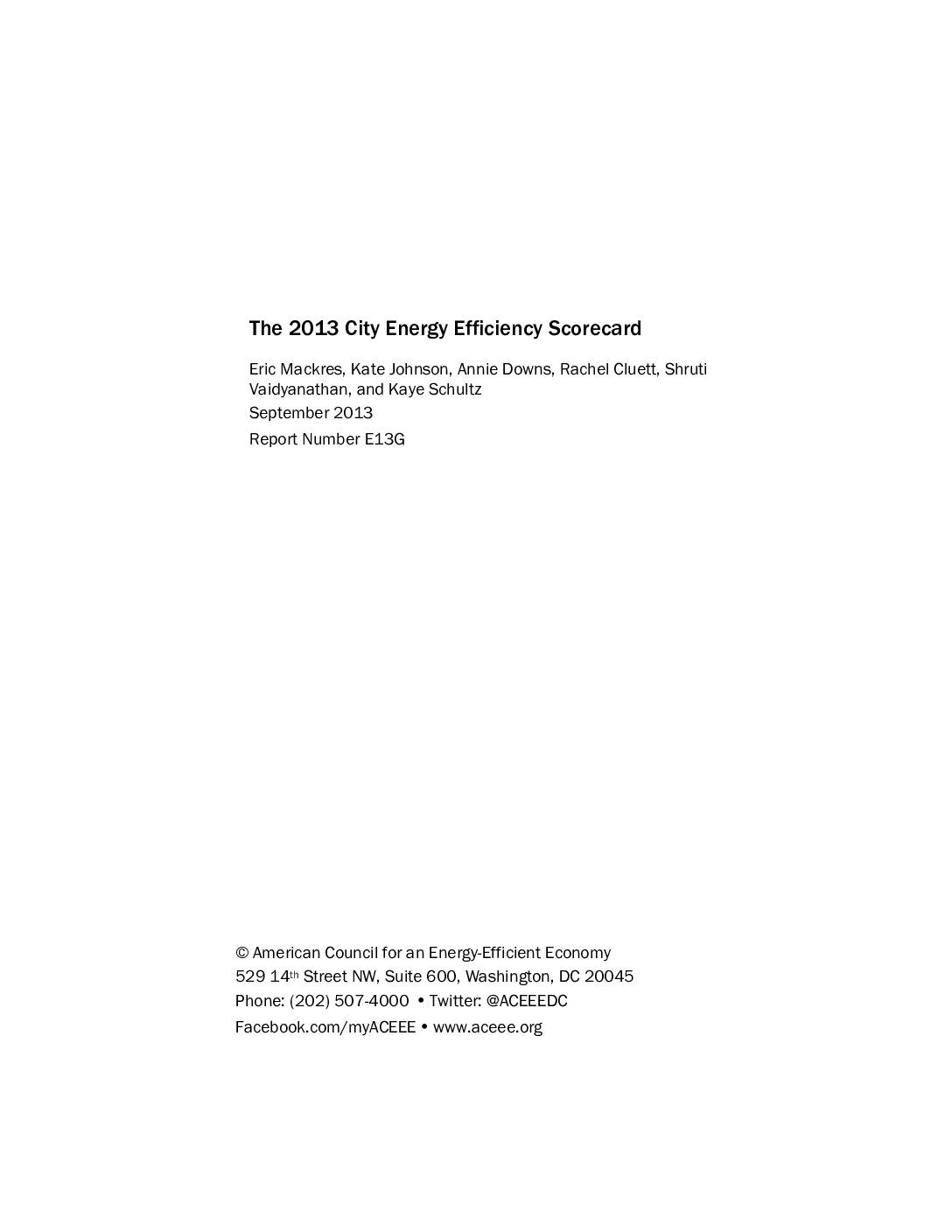Energy efficiency may be the cheapest, most abundant, and most underutilized resource for local economic and community development. Local leadership and commitment to energy efficiency is strong in many communities around the United States. The specific responsibilities of local governments give them large influence over energy use in their communities. Additionally, local energy efficiency initiatives provide benefits where they are most tangible and visible to residents, directly improving the communities where residents live and work.
This first edition of the City Energy Efficiency Scorecard ranks 34 of the most populous U.S. cities on their policies and other actions to advance energy efficiency, across five policy areas: local government operations; buildings; energy and water utilities; transportation; and the community as a whole. It puts these actions in context by also presenting data on energy consumption in these cities when possible. The data on policies and other local actions and resulting scores help to identify cities that are excelling and those that have room for improvement. We provide examples throughout the Scorecard of best practice actions being taken by leading cities in various policy areas. As a result, the Scorecard offers the beginning of a roadmap for any local government aiming to improve its city’s energy efficiency through the most effective means possible, learning from other cities’ successes and customizing best practice strategies to suit the local context and their community’s priorities.
Share this

Sectors: Buildings, Cross cutting, Renewables
Country / Region: Northern America, United States
Tags: cities, energy, energy efficiency, international developmentKnowledge Object: Publication / Report
Published by: ACEEE
Publishing year: 2013
Author: Eric Mackres, Kate Johnson, Annie Downs, Rachel Cluett, Shruti Vaidyanathan, Kaye Schultz
